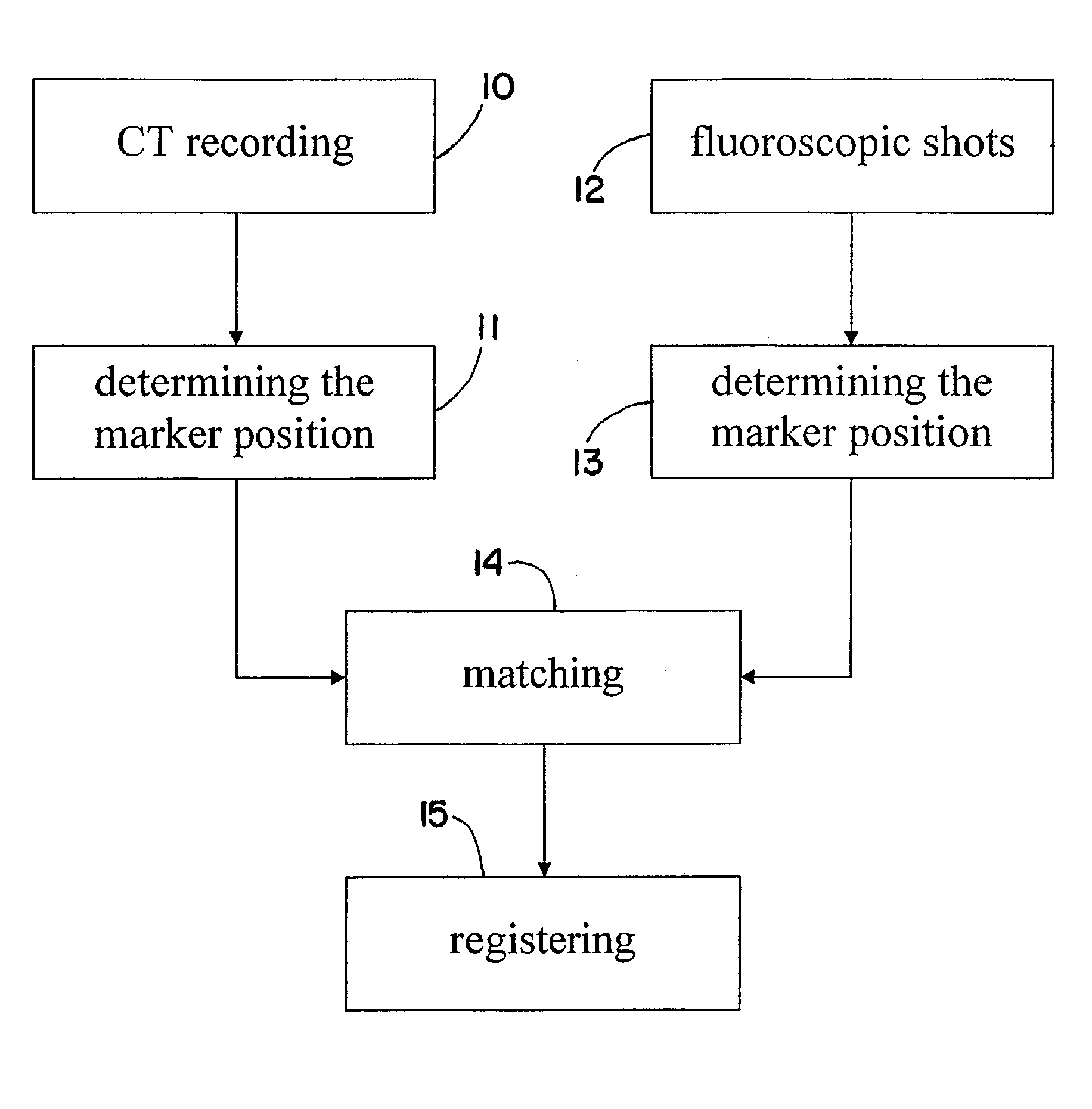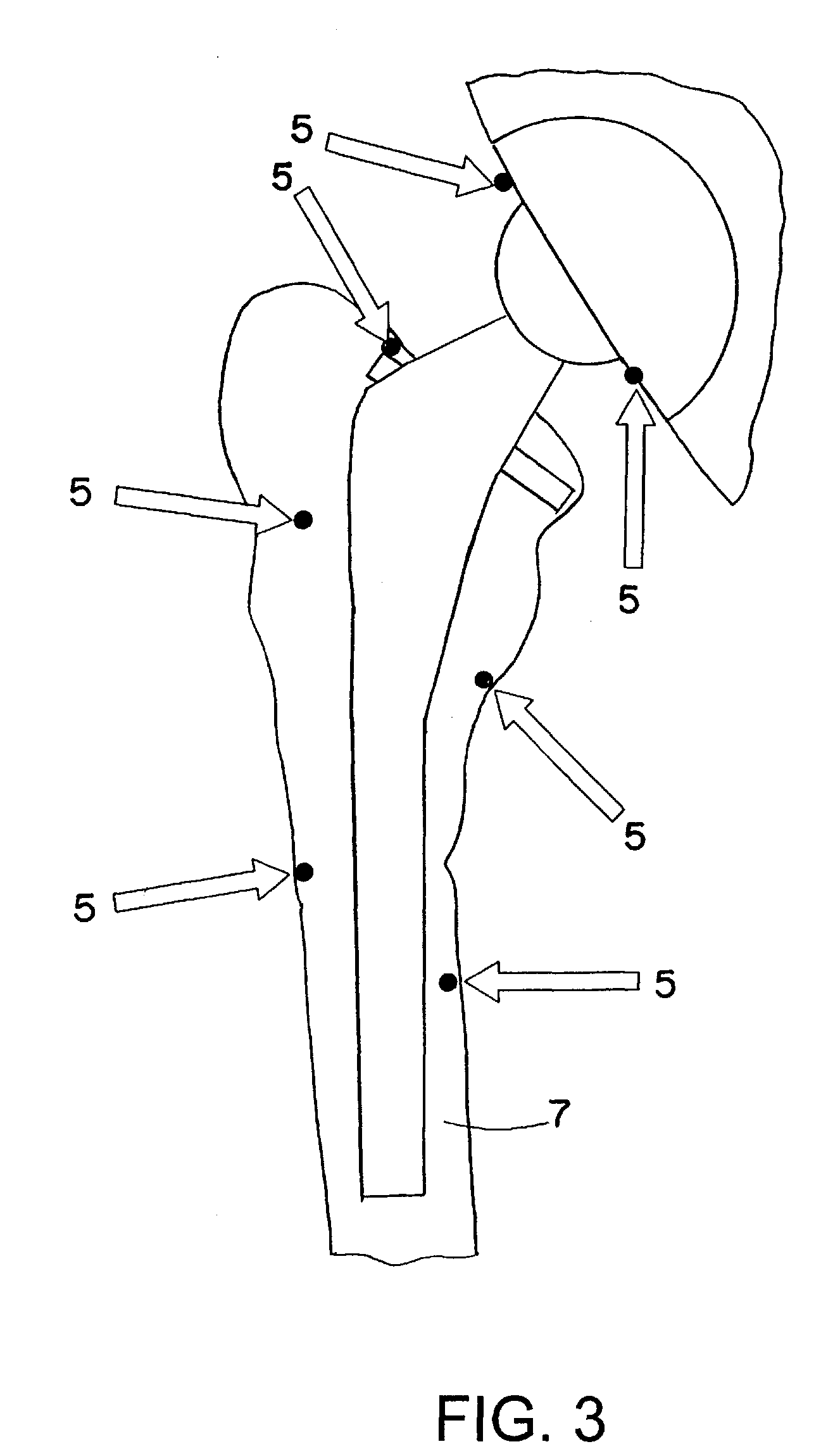Method and device for registering an anatomical structure using markers
a technology of anatomical structure and registration method, which is applied in the field of medical registration of anatomical structure using markers, can solve the problems of difficult or impossible to identify a characteristic or unique contour of the pelvis, difficult to detect a contour or characteristic point, etc., and achieve the effect of easy registration of a structur
- Summary
- Abstract
- Description
- Claims
- Application Information
AI Technical Summary
Benefits of technology
Problems solved by technology
Method used
Image
Examples
Embodiment Construction
[0024]FIG. 1 illustrates an exemplary injection device for inserting spherical tantalum markers into a bone. The injection device includes a hollow drill 1 having an opening 1a at its tip. One or more tantalum spherule 5 (FIG. 2) can be dispensed through the opening 1a once the drill 1 has drilled a recess or hole into a bone 6 (e.g., to a depth of about 3 mm). The drill 1 can be detachably fixed on a housing 2, which includes a handle 3 and a trigger button 4. The drill 1 can be rotated either by manually operating the handle 3 or by a motor provided in the housing 2 of the instrument. At the desired depth of penetration, the button 4 can be operated, which inserts the tantalum sphere 5 into the bone 6.
[0025]FIG. 2 illustrates a cross-sectional view of the drill 1 penetrating an approximately 3 mm thick compact bone layer in order to insert the spherical tantalum marker 5 (which has a diameter of about 0.5 mm) into the bone 6. A marker 5 inserted in this way sits securely in the bo...
PUM
 Login to View More
Login to View More Abstract
Description
Claims
Application Information
 Login to View More
Login to View More - R&D
- Intellectual Property
- Life Sciences
- Materials
- Tech Scout
- Unparalleled Data Quality
- Higher Quality Content
- 60% Fewer Hallucinations
Browse by: Latest US Patents, China's latest patents, Technical Efficacy Thesaurus, Application Domain, Technology Topic, Popular Technical Reports.
© 2025 PatSnap. All rights reserved.Legal|Privacy policy|Modern Slavery Act Transparency Statement|Sitemap|About US| Contact US: help@patsnap.com



